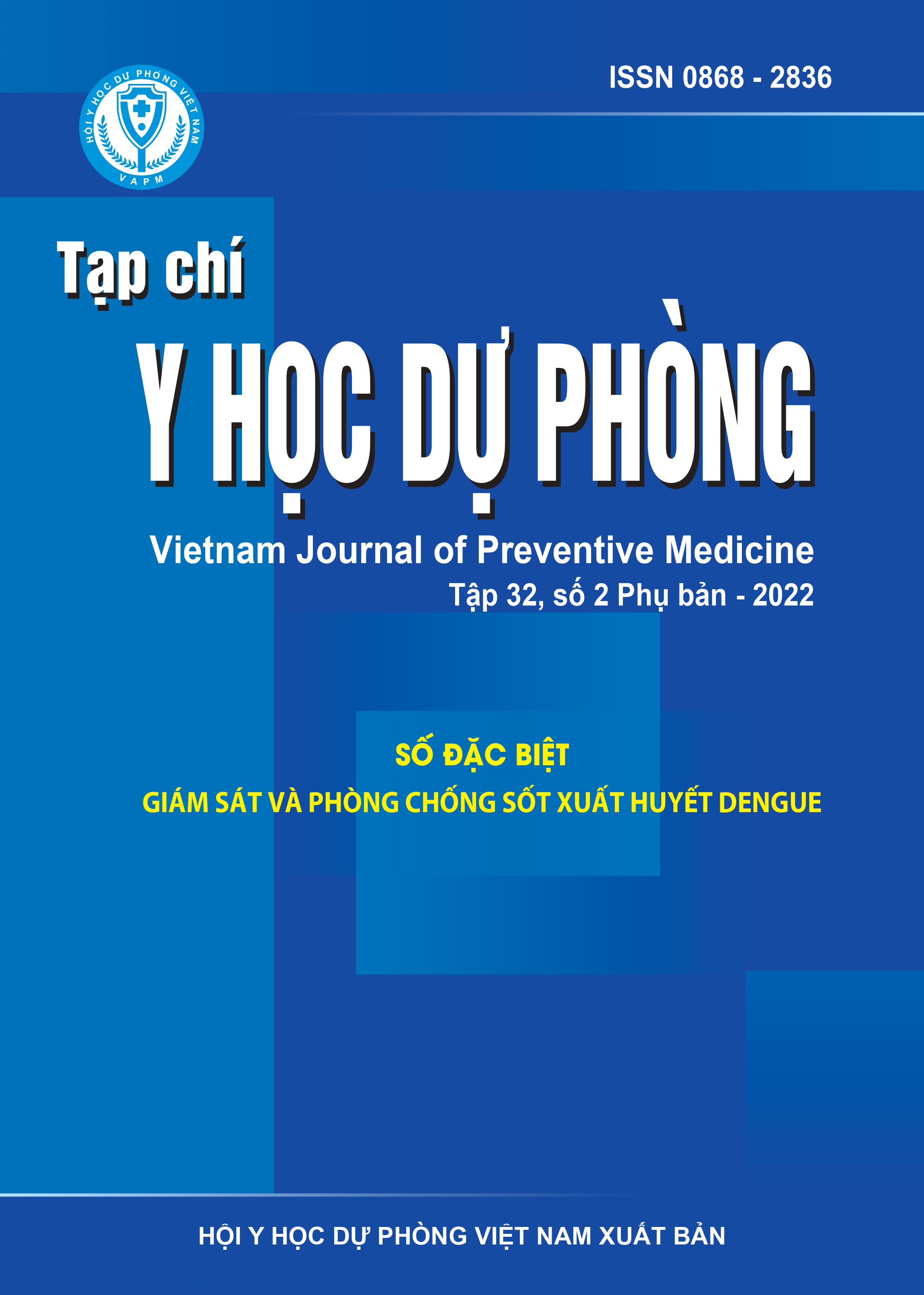Dengue fever forecast model (D-MOSS) in the North of Vietnam, 2019 – 2021
DOI:
https://doi.org/10.51403/0868-2836/2022/606Keywords:
D-MOSS, dengue prediction model, the North of VietnamAbstract
Building a successful early warning model for dengue hemorrhagic fever will bring positive effects in disease prevention. This study aimed to build and complete an early prediction model of dengue disease (called D-MOSS) based on the integration of observation data from satellites and data on weather, surface water availability, case history to make early forecasts. The model results showed that there was a very high probability that 80% - 100% of cases would exceed the 75% percentile as in Quang Ninh, Bac Giang; 60% - 80% of cases would exceed the 75% percentile in Hanoi, Thanh Hoa, Nghe An during the period from August to October 2021. With a 1-month, 2-month warning level, the model had high accuracy, up to about 80%, and when forecasting 6 months in advance, the accuracy of the model dropped to less than 40%. In general, the D-MOSS model has predicted the trend of the dengue epidemic, it can be said that this is an important reference channel in developing dengue prevention and response plans for the current provincial level and is expected to build an early forecasting model to the district level nationwide.
Downloads
Downloads
Published
How to Cite
Issue
Section
License
Publication License No 150/GP-BTTTT signed on May 8, 2014;
Electronic Publication License No 322/GP-BTTTT signed on June 15, 2016.


